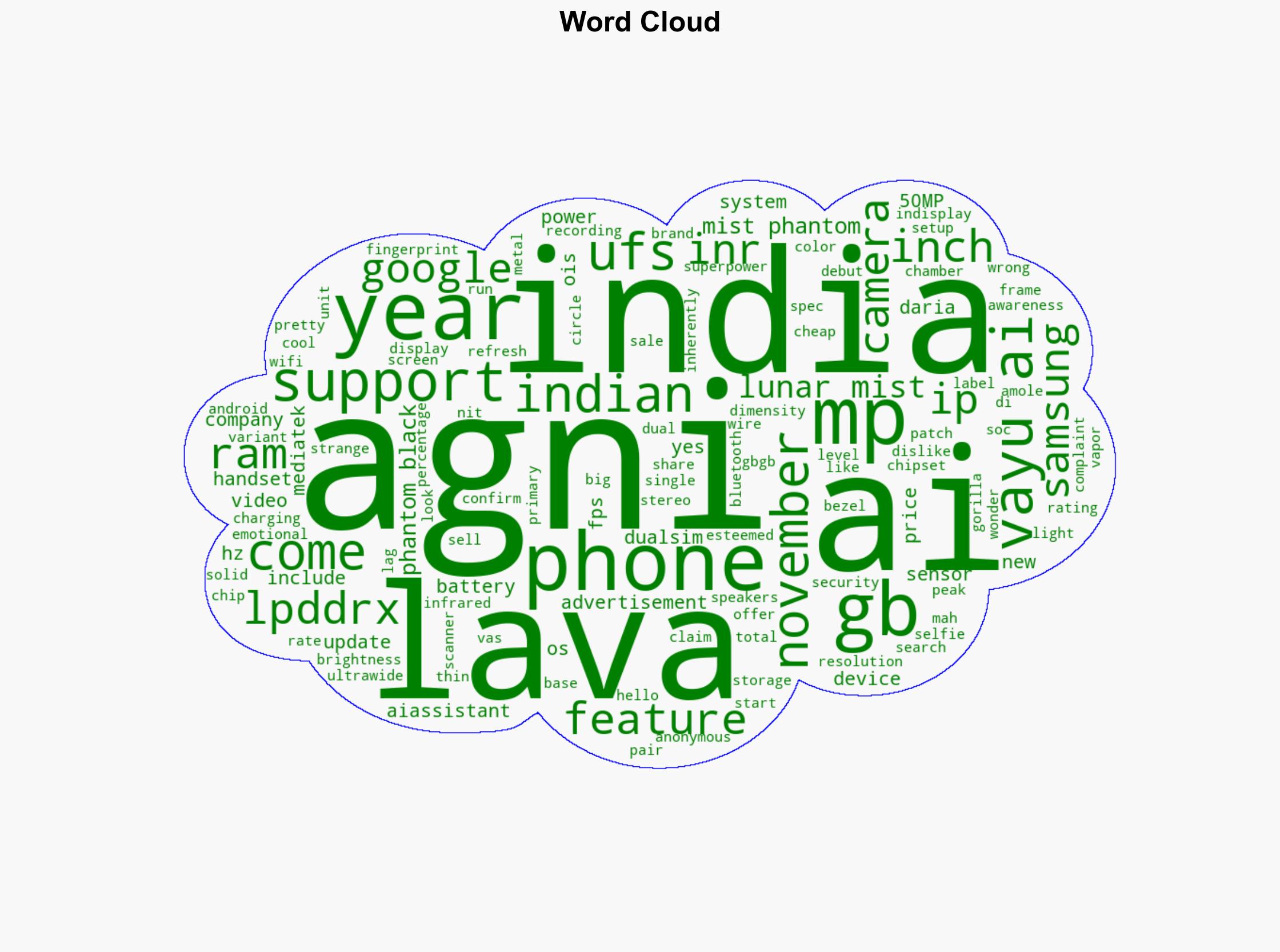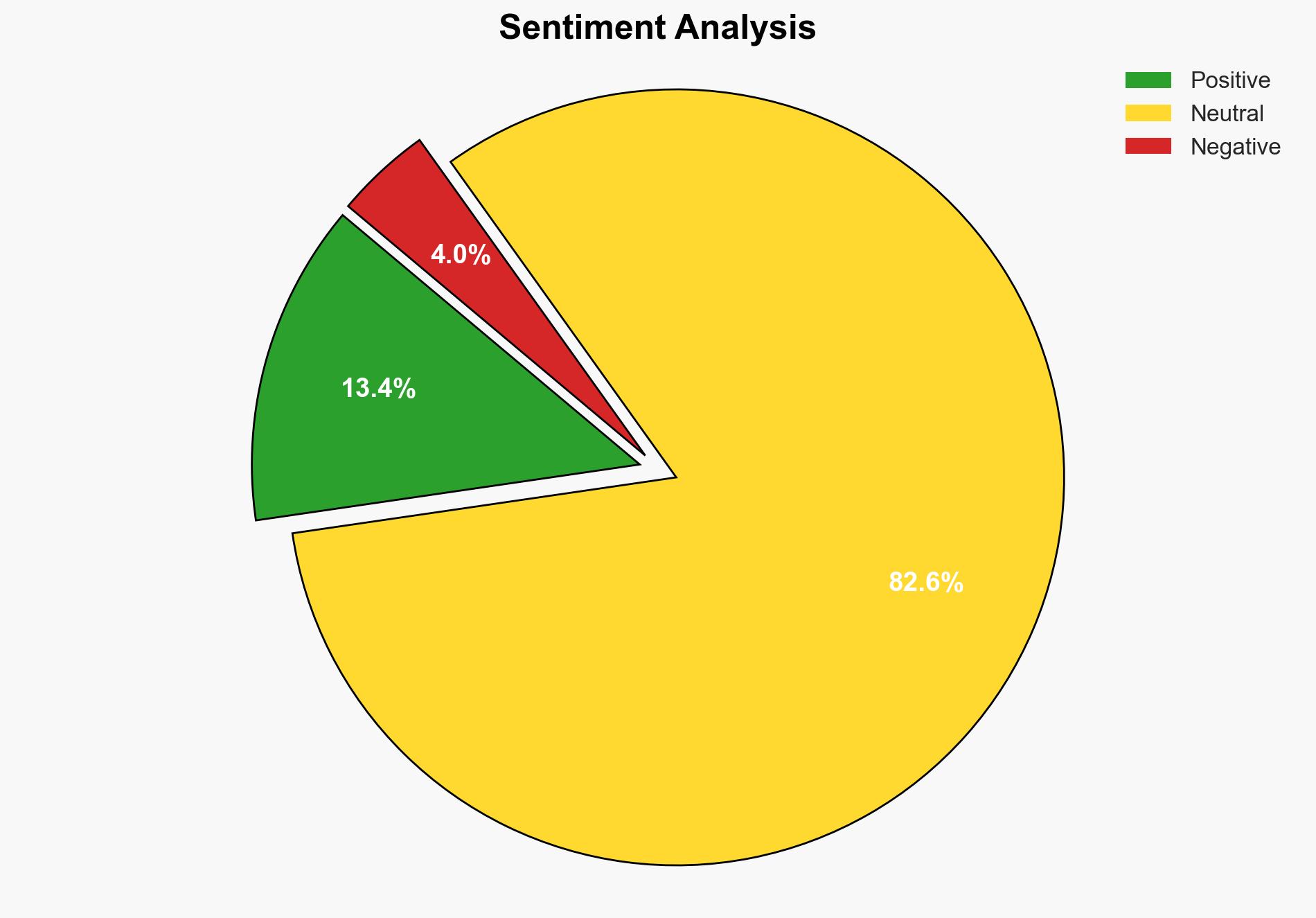Lava Agni 4 arrives with the Dimensity 8350 SoC and a 120Hz AMOLED screen – GSMArena.com
Published on: 2025-11-20
AI-powered OSINT brief from verified open sources. Automated NLP signal extraction with human verification. See our Methodology and Why WorldWideWatchers.
Intelligence Report: Lava Agni 4 Launch Analysis
1. BLUF (Bottom Line Up Front)
The launch of the Lava Agni 4 with the Dimensity 8350 SoC and advanced features positions Lava as a competitive player in the Indian smartphone market. The most supported hypothesis is that Lava aims to capture a larger market share by offering high-spec devices at competitive prices. Confidence level: Moderate. Recommended action: Monitor Lava’s market penetration and consumer reception to assess potential shifts in market dynamics.
2. Competing Hypotheses
Hypothesis 1: Lava is strategically positioning itself to capture a significant share of the mid-range smartphone market in India by offering high-spec devices at competitive prices.
Hypothesis 2: Lava’s launch of the Agni 4 is primarily a branding exercise to enhance its market image and technological capabilities, without expecting significant market penetration.
Hypothesis 1 is more likely due to the competitive pricing and feature set that aligns with consumer demand for value-oriented smartphones in India.
3. Key Assumptions and Red Flags
Assumptions: The Indian market is receptive to new entrants with competitive pricing. Consumers prioritize features like AI capabilities and high refresh rate displays.
Red Flags: Potential overstatement of AI capabilities and emotional awareness features could lead to consumer skepticism. The reliance on MediaTek chipsets may not appeal to all segments.
4. Implications and Strategic Risks
Economic Risks: If successful, Lava could disrupt the mid-range market, affecting competitors like Samsung and Xiaomi.
Informational Risks: Overhyping AI capabilities could lead to reputational damage if consumer expectations are not met.
Cyber Risks: Increased connectivity features could expose the device to cybersecurity vulnerabilities.
5. Recommendations and Outlook
- Monitor consumer feedback and sales data post-launch to gauge market reception.
- Engage in cybersecurity assessments to ensure device security and consumer trust.
- Best-case scenario: Lava captures a significant market share, enhancing its brand and profitability.
- Worst-case scenario: Consumer backlash over unmet expectations damages Lava’s reputation.
- Most-likely scenario: Lava gains a moderate increase in market share, establishing a foothold in the mid-range segment.
6. Key Individuals and Entities
No specific individuals are mentioned in the source text. The primary entity is Lava International, the manufacturer of the Agni 4 smartphone.
7. Thematic Tags
Cybersecurity, Market Dynamics, Consumer Electronics, AI Technology
Structured Analytic Techniques Applied
- Adversarial Threat Simulation: Model and simulate actions of cyber adversaries to anticipate vulnerabilities and improve resilience.
- Indicators Development: Detect and monitor behavioral or technical anomalies across systems for early threat detection.
- Bayesian Scenario Modeling: Quantify uncertainty and predict cyberattack pathways using probabilistic inference.
Explore more:
Cybersecurity Briefs ·
Daily Summary ·
Support us





